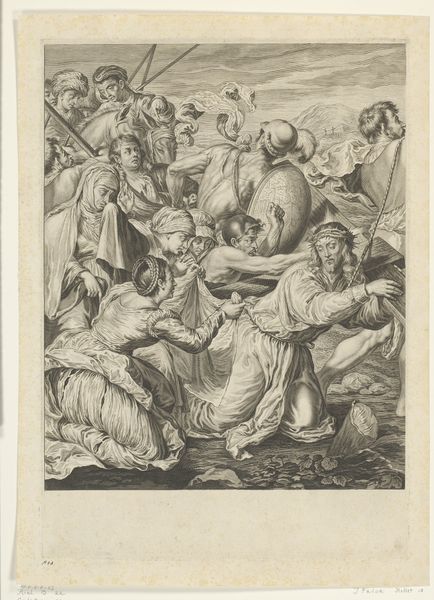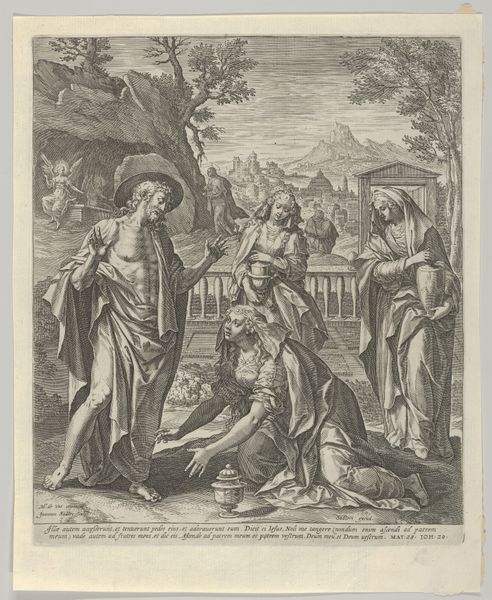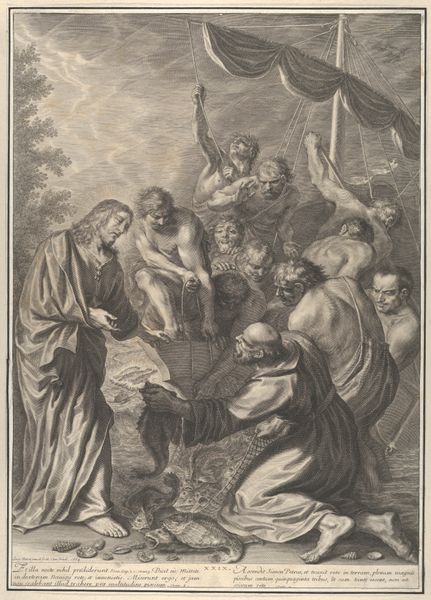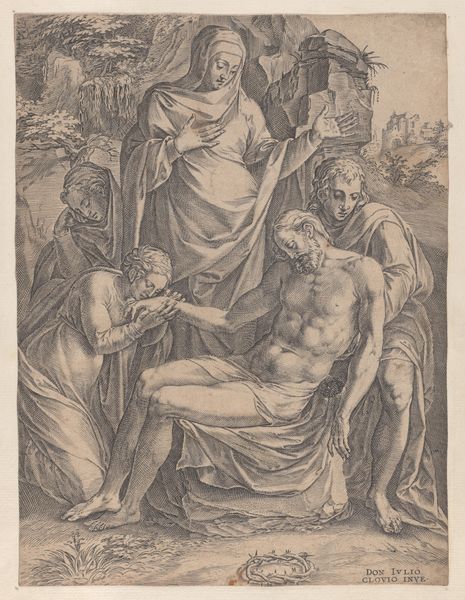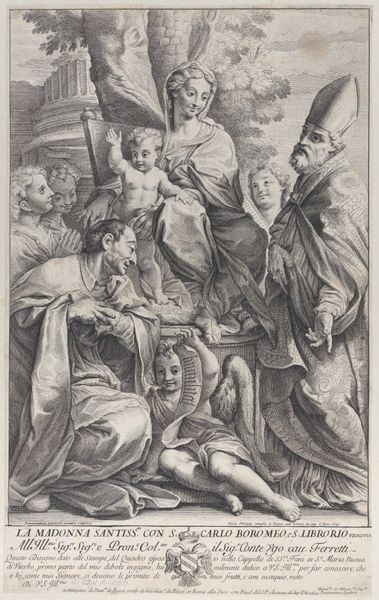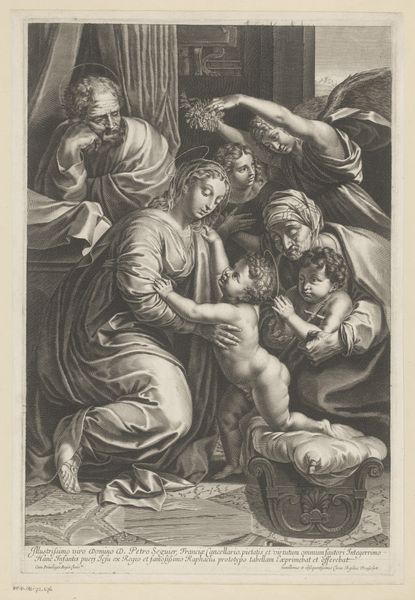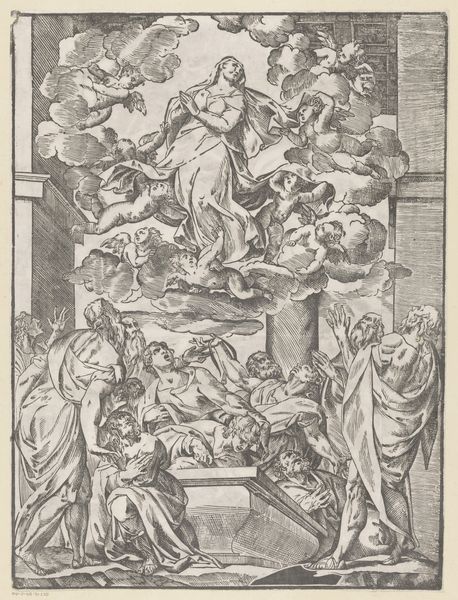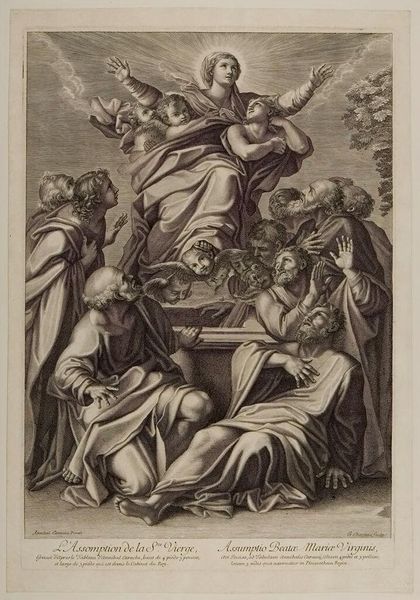
print, engraving
#
baroque
# print
#
old engraving style
#
caricature
#
figuration
#
limited contrast and shading
#
history-painting
#
engraving
Dimensions: height 413 mm, width 284 mm
Copyright: Rijks Museum: Open Domain
Editor: This is Guillaume Chasteau's "Hemelvaart van Maria," or "The Assumption of Mary," an engraving dating back to the 17th century. It depicts the Virgin Mary ascending to Heaven, surrounded by angels and onlookers. What strikes me is the rather intense expressions, especially of those gazing up at her. What do you see in this piece? Curator: I see a rich tapestry of interwoven cultural narratives and visual metaphors. Note how Mary isn't floating upwards serenely. Rather she rises in triumph; she’s very much an active agent in her own glorification. Editor: True, I suppose I assumed a more passive reading, influenced by other depictions. The upward reaching arms are more assertive than submissive. Curator: Exactly. Her ascent isn't merely about divine intervention. Look at the gazes of the onlookers. There’s awe, but there's also understanding – a communal recognition of spiritual significance. Their faces embody centuries of theological thought on redemption and the human connection to the divine. How do you read the grouping and their proximity to the angels and to Mary? Editor: It looks to me like some sort of cultural memory - figures remembering and internalizing shared values over long periods of time. A bit dramatic but rather sincere. Curator: Well observed. Notice also how Chasteau employed line and shading to convey the shift from earthly concerns to ethereal grace. How does this symbolic interpretation change your view of the engraving? Editor: I initially focused on individual expressions, but now, I realize the collective upward gaze creates a sense of shared belief, connecting viewers across time. Thanks, I never would have looked that deeply at this. Curator: It’s always fascinating how the symbols shift and stay relevant over time. Hopefully others see these symbolic layers in fresh and personally insightful ways.
Comments
No comments
Be the first to comment and join the conversation on the ultimate creative platform.

